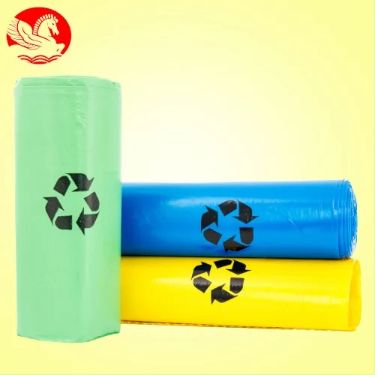Here we present the packaging industry’s pressing need for long-term sustainability solutions and showcase biodegradable polymers as an exciting new development in this field. The main goal is to reduce the negative effects on the environment and encourage the use of more sustainable packaging.
- Conventional Plastics and Their Environmental Impact: This part delves into the difficulties caused by plastic pollution, with an emphasis on the ways in which it affects ecosystems, marine life, including human health in the long run. When faced with these problems, the need for long-term solutions becomes clear.
- A New Era in Sustainability: Biodegradable Plastics: What You Need to Know
In this part, we will describe biodegradable materials and their features as we navigate biodegradable plastics. Biodegradable plastics are an eco-friendly substitute for conventional plastics since they decompose naturally, lowering the amount of plastic trash that ends up in the environment. - Different Forms of Biodegradable Polymers: A Wide Variety of Eco-Friendly Materials:
Polylactic acid (PLA), polyhydroxyalkanoates (PHA), and polybutylene adipate terephthalate (PBAT) are just a few of the biodegradable polymers covered in this area. Biodegradable packaging options are versatile since each kind provides distinct qualities.
Fifth, Biodegradable Packaging Innovations: Moving Beyond Conventional Plastics:
Moving on to new developments, this part looks at how biodegradable packaging has progressed. Innovative solutions are expanding the sustainable packaging choices available for various purposes. These possibilities range from food-safe films to substitutes made from plants, going beyond standard plastics.
- Biodegradable Packaging: A Food-to-Electronics-Revolution
In this part, we’ll talk about the many uses of biodegradable packaging and how they might be used in different sectors. The versatility of biodegradable materials is shown by the wide range of products they may be used in, including food packaging, technology, textiles, and more.
Biodegradable plastics are great for the environment, consumers, and businesses all at once. 7.
In this part, we will take a look at the positive aspects of using biodegradable plastics. Businesses, consumers, & the environment may all benefit from biodegradable plastics, which can reduce environmental impact, satisfy consumer demand of eco-friendly solutions, and comply with growing legislation.
- Obstacles and Things to Think About: Finding the Right Balance Between Innovation and Pragmatism:
This section addresses factors to think about when using biodegradable plastics, while also acknowledging the difficulties of doing so. Some of the challenges that biodegradable alternatives face include scalability, economic implications, and making sure that they meet certain packaging standards while still being practical. - Rules for Biodegradable Packaging: Getting Around the Compliance Maze:
In this part, we will examine the changing legislation around biodegradable packaging requirements. Responsible adoption of sustainable practices by firms is facilitated by their familiarity with and adherence to relevant legislation, which in turn helps to standardize the sector. - Raising Knowledge and Educating Consumers: Influencing Sustainable Decisions:
Now we can turn our attention to the customer, and this part highlights how education may influence sustainable decisions. In order to influence market demand, it is important to raise knowledge about the advantages of biodegradable packaging so that customers may make eco-conscious choices.

Initiatives for a Greener Future: Industry Partnerships 11. Collaborative Initiatives
In this portion, we’ll talk about collaborative projects and how industry collaborations are important for developing sustainable practices. Accelerating the adoption of disposable packaging solutions requires research, development, and a collaborative effort, all of which may be fostered via collaboration.
- Real-Life Examples: Highlighting Sustainable Packaging Success Stories:
Through an analysis of case studies, this section showcases the triumphs of companies that have used biodegradable packaging solutions. Adopting environmentally conscious procedures in the packaging business is feasible, practical, and has good impacts, as shown by real-world instances. - Looking Ahead: Exploring the Next Generation of Eco-Friendly Packaging:
The section addressing future trends concludes by looking forward to the next explosion of sustainable packaging ideas. More circularity, breakthroughs in materials science, and a general industrial movement towards a greener, more sustainable future are all things that are expected to happen.
The packaging business can greatly contribute to a cleaner, more sustainable world by switching to biodegradable polymers and encouraging a spirit of innovation and responsibility.
